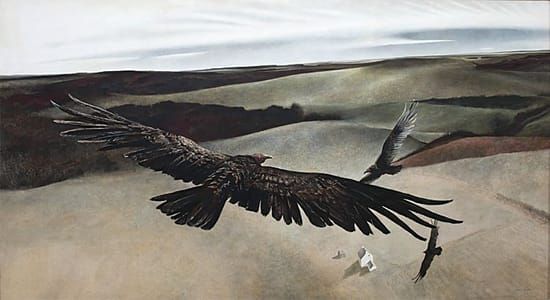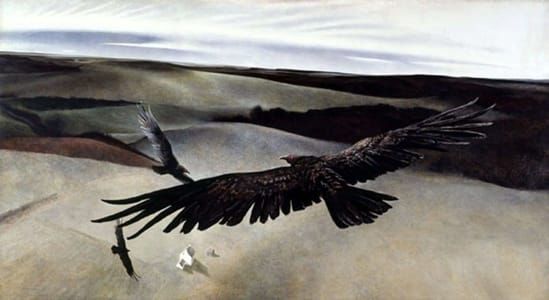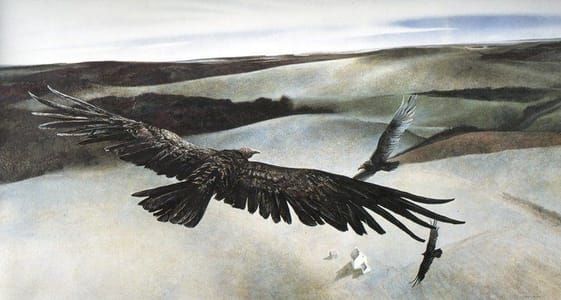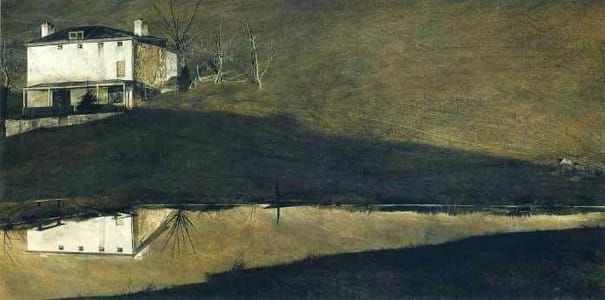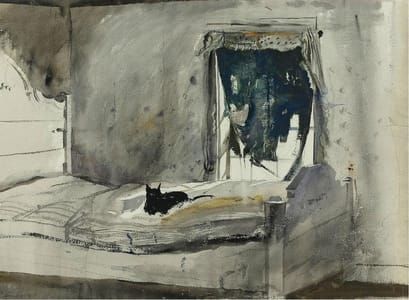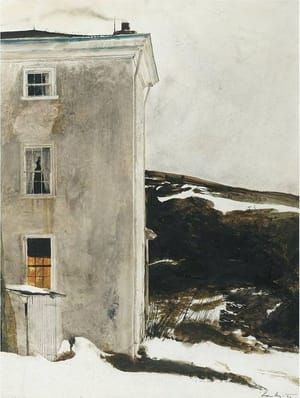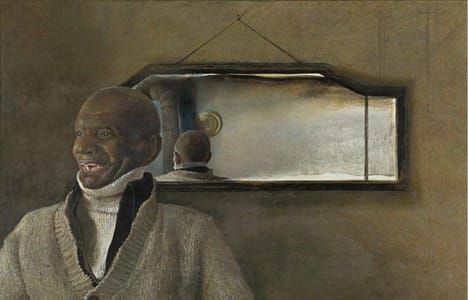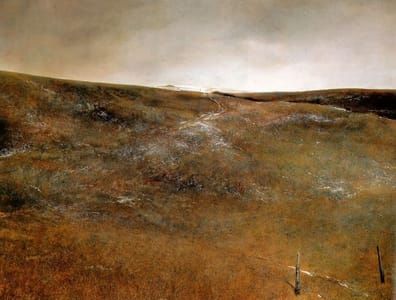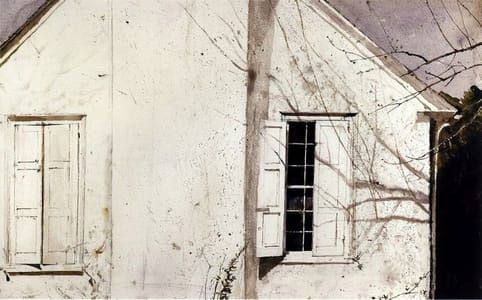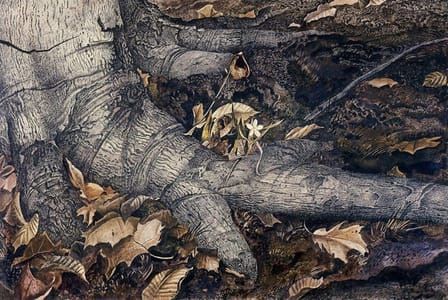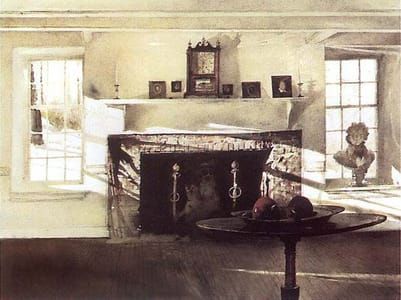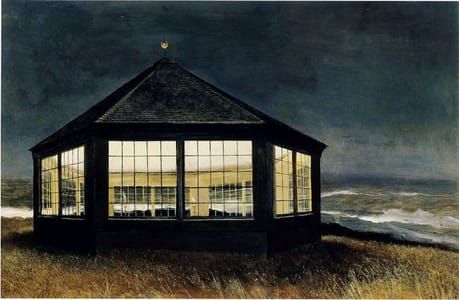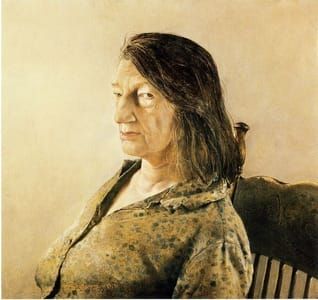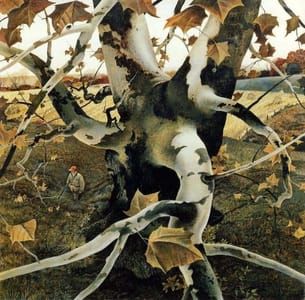

Soaring, 1942
Andrew Wyeth
...Soaring, the largest painting of his career, which is painted from the hauntingly beautiful vantage point of a turkey vulture high above the ground.
[http://museum.middlebury.edu/exhibitions/past/2009-2010/node/555]
In 1950, Andrew Wyeth completed a large, dark, and unsettling painting of three vultures flying above the Pennsylvania countryside (Fig.1). He called the work Soaring. The product of an unusually long and somewhat tumultuous creative gestation, this magisterial view of scavengers in flight preoccupied the painter for the better part of a decade—a period that not only witnessed his emergence as an artist of national reputation but also coincided with the rise of a new morality brought about by the horrors of World War II and the pervasive tensions of the Cold War. Although Wyeth abandoned the effort more than once, the final painting is today recognized as an early landmark in a long and influential career. Like many of Wyeth’s best efforts—the contemporaneous Christina’s World of 1948 is but one example—Soaring is both accessible and ambiguous. It is elliptical to the point of being ominous. As a representational drama in an era that prized abstraction, the painting is an outlier that rewards close observation for what it reveals about mid-century American visual culture.
Under his father, N.C. Wyeth’s, tutelage, Andrew Wyeth drilled daily in drawing from life and casts and in depicting the landscape surrounding the family home in Chadds Ford, Pennsylvania. In 1929, Andrew’s older sister Henriette married Peter Hurd (1904–1984), a fellow student of their father’s. In a moment of serendipity that had a profound impact on the trajectory of American art, Hurd tutored his young brother-in-law in the historical technique of painting in egg tempera. Armed with an age-old technique and an eye for verisimilitude, the younger Wyeth developed a signature style distinguished by meticulous brush handling.
Unlike the gravity-laden composition of Christina’s World, the point of view employed by Wyeth in Soaring places the observer high in the air, above and behind the highest vulture, effectively making us part of a complicated and unresolved visual drama. This extreme perspective—literally the bird’s-eye view—had long been the stuff of popular fascination by the time Wyeth began sketching in 1942, and it carries much ideological baggage....
In Soaring, Andrew Wyeth distilled the sublimated anxiety of mid-20th-century America. Long taken to be the work of a painter sui generis, the odd man out, works such as Soaring demonstrate Wyeth’s close connection to the world around him....
[https://www.incollect.com/articles/soaring]
© 1942 Andrew Wyeth
Andrew Wyeth
artistArthur
coming soon
